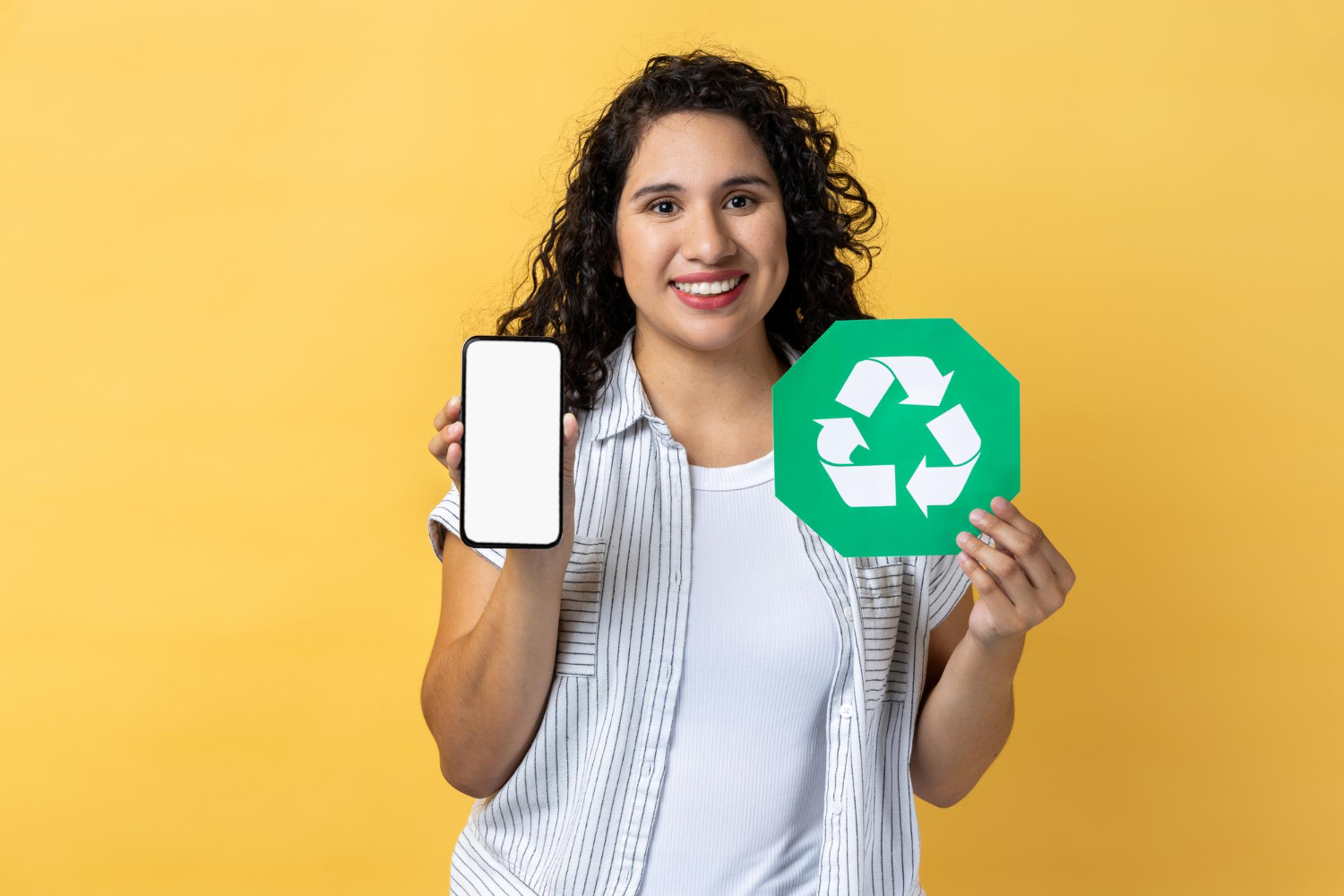Smartphones have taken a prominent place in our lives and have become essential tools for communicating, working, entertainment and information. However, their unbridled consumption generates a lot of waste and poses major environmental challenges.
One of the main challenges of recycling smartphones lies in the complexity of these devices. Indeed, they are composed of many materials and electronic components, such as metals, plastics, glasses, batteries, and even rare earths. Their dismantling and recycling therefore require technical expertise and specific processes. In addition, the lifespan of smartphones tends to shorten with the rapid evolution of technologies, which increases the quantity of waste generated.
To remedy these problems, smartphone take-back and recycling initiatives have been put in place. Some companies offer users the opportunity to return their old smartphones so that they can be recycled responsibly. These devices are then dismantled and the recovered materials are reused in the manufacture of new electronic products. This practice therefore makes it possible to limit the extraction of new raw materials and reduce the environmental impact linked to production.
Another emerging solution is smartphone reconditioning. This practice consists of reconditioning used devices to resell them on the market at more affordable prices. Refurbishment helps extend the lifespan of smartphones, thereby reducing the amount of electronic waste. Additionally, some companies offer warranties on refurbished smartphones, providing a reliable and economical alternative to purchasing new smartphones.
In addition to recycling and reconditioning, it is also important to adopt responsible consumption and favor smartphones that are durable and easy to repair. By opting for devices designed in an eco-responsible manner, with recycled and recyclable materials, we help to limit our impact on the environment. Furthermore, it is recommended to extend the life of our smartphones by maintaining them properly, avoiding battery overloads and using protective cases to prevent drops and damage.

The importance of community ecosystems in the life cycle of smartphones
Beyond traditional methods of recycling and reconditioning, a new trend is emerging: that of community ecosystems. These collectives play a crucial role in educating the public, raising awareness of recycling issues, and sharing best practices to extend the lifespan of smartphones.
Participatory workshops for learning: In many cities, community workshops are emerging. These spaces are designed to allow smartphone users to learn how to repair their devices themselves. They are supervised by experts who share their knowledge and skills. These workshops not only raise awareness of the importance of repair, but also strengthen social bonds by highlighting solidarity and the sharing of knowledge.
The establishment of exchange platforms: Some community ecosystems have developed exchange platforms, where users can give, sell or exchange smartphone parts, accessories or even advice. This helps give a second life to many items that would otherwise be thrown away. In addition, this encourages a circular economy where each element finds its place.
The emergence of participatory awareness campaigns: Many associations and collectives committed to the sustainability of smartphones are launching campaigns to raise public awareness of responsible consumption. These campaigns often use testimonials, tips, and challenges to engage users. The objective is to make everyone aware of their role and responsibilities in the life cycle of a smartphone.
The impact of technological innovations on the durability of smartphones
While methods of recycling, remanufacturing, and the adoption of community ecosystems show positive advances in the smartphone industry, the technology itself is also evolving. Technological innovation offers unique opportunities to make smartphones more sustainable and eco-friendly.
More efficient and environmentally friendly batteries: Current research aims to develop batteries that are not only more durable, but also more environmentally friendly. Less dependent on rare and potentially toxic materials, these new batteries could extend the lifespan of smartphones while minimizing their ecological impact.
Flexible, Shatterproof Screens: One of the main reasons people replace their smartphones is a broken screen. Innovations in flexible displays could significantly reduce this problem. These screens, more resistant to falls and shocks, would limit the need to change devices frequently.
The integration of biodegradable materials : While traditional plastics can take centuries to degrade, some manufacturers are exploring the use of biodegradable or compostable materials in smartphone design. This could revolutionize the way we dispose of our end-of-life devices.
Using artificial intelligence to optimize performance: AI can help optimize the performance of a smartphone, by effectively managing power consumption, detecting issues before they become critical and providing solutions to extend the life of the device.
Consumer involvement in the choice of eco-responsible smartphones
The role of the consumer in preserving the environment cannot be overlooked, especially when it comes to the sustainability of smartphones. By making informed decisions, each user can positively influence the life cycle of these devices and their impact on the planet.
Growing awareness of environmental issues: With easier access to information, more and more users are aware of the consequences of their consumption choices. They are now more likely to look for smartphones designed in an eco-friendly way, with a particular focus on the materials used, battery durability and the device’s ability to be repaired.
Opt for eco-responsible certifications : Several labels and certifications, such as “Fairphone” or “EPEAT”, allow consumers to easily identify smartphones produced sustainably. These certifications take into account different criteria such as durability, recyclability and repairability. By favoring these products, consumers encourage the industry to adopt more environmentally friendly practices.
Participation in eco-responsible consumer groups: Many forums and consumer groups share advice, opinions and recommendations on smartphones and their environmental impacts. By joining these communities, users can educate themselves and make more informed purchasing decisions.
Promote the local economy and small manufacturers: Unlike big brands that mass produce, some small manufacturers make it a point of honor to create smartphones in an ethical and sustainable way. By supporting these companies, consumers not only contribute to the creation of local jobs, but also to more environmentally friendly production.












